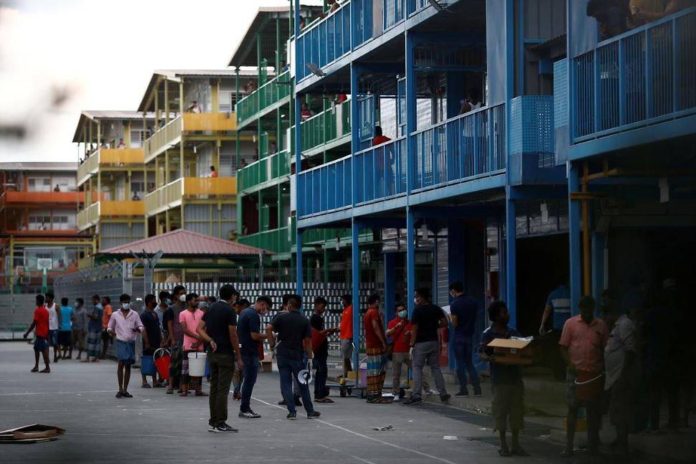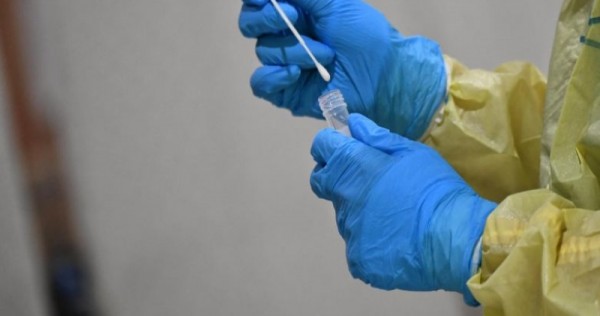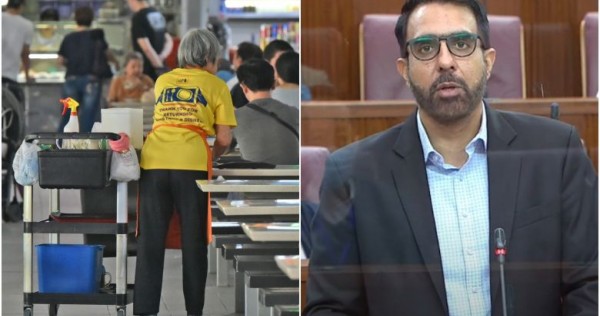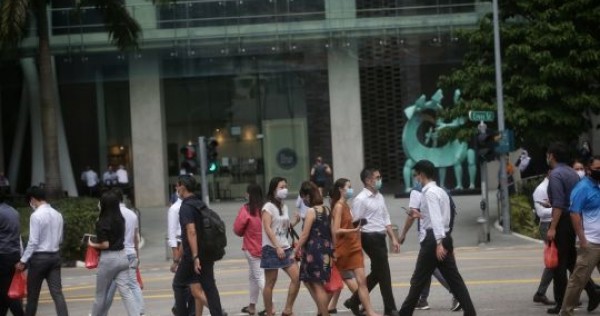SINGAPORE: Singapore on Tuesday (Oct 13) reported no new COVID-19 case in dormitories for the first time in more than six months.
Since the first two infections in dormitories were reported on Mar 29, the number of infections in dormitories has grown to 54,485.
Cases in dormitories, which include purpose-built dormitories, factory converted dormitories and construction temporary quarters, form the bulk of Singapore’s 57,884 cases.
The daily number of cases fell to just single digits in October, but at its peak, more than 1,000 new cases were identified a day.
READ: Singapore reports 4 new COVID-19 cases, all imported
FIRST CASES
The first two COVID-19 infections in dormitories – Cases 826 and 829 – were reported on Mar 29. Linked to each other, the Bangladeshi and Indian work pass holders were admitted to hospitals for treatment.
A day later, the first dormitory cluster was announced. Four confirmed cases, including the two reported on Mar 29, were linked to form a new cluster at the S11 Dormitory @ Punggol.
Less than a week after the first cases were announced, the daily number of infections linked to dorms moved into double figures.
By Apr 3, the cluster at S11 dormitory was 24 strong, with another cluster at Westlite Toh Guan dormitory growing to 18 cases.
Prime Minister Lee Hsien Loong announced a “circuit breaker” was needed to stem the spread of COVID-19 in the country.
READ: PM Lee on COVID-19 situation: At a glance
Two days later, the S11 dormitory and Westlite Toh Guan became the first two dormitories in Singapore to be gazetted as isolation areas under the Infectious Disease Act.
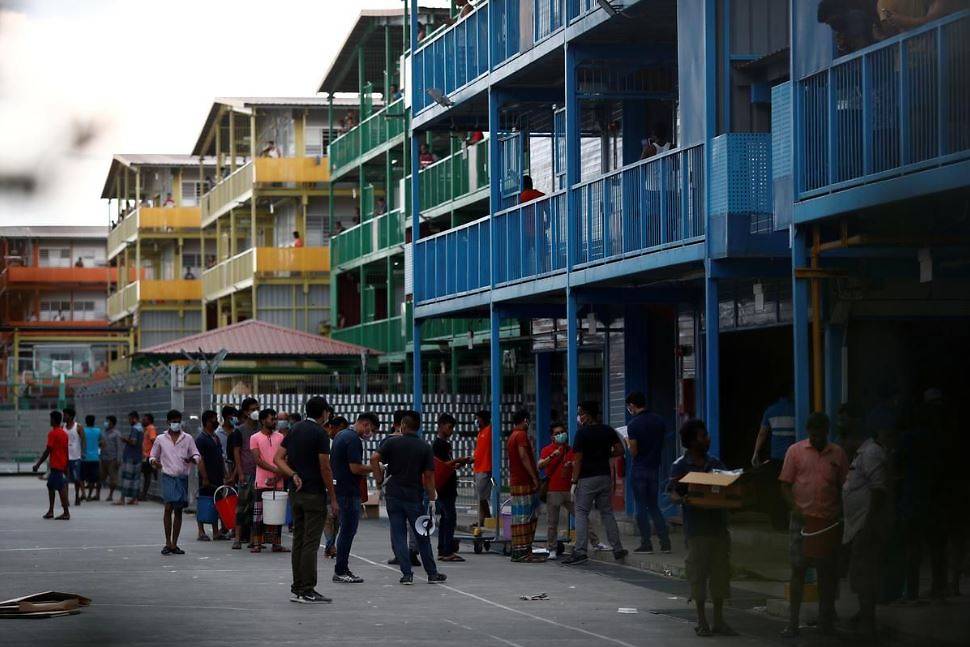
Workers queue for food at S11 Dormitory @ Punggol on Apr 6, 2020. (Photo: Reuters / Edgar Su)
It meant all 19,800 migrant workers in those two dormitories were quarantined in their rooms. Other dormitories would follow suit.
Manpower Minister Josephine Teo said then that the measures were put in place to ensure the health and well-being of “everyone”.
“Not just Singapore citizens, but also foreign workers who are here, helping our economy, and their employers. We want to give foreign workers the assurance that these measures are taken in their interests, and their well-being,” Mrs Teo added.
As the country moved into the circuit breaker period, the number of cases in the dormitories started rising quickly.
Less than two weeks after the first two cases were reported, MOH on Apr 9 identified 202 new cases linked to dormitories – the first time the daily number of dorm cases moved into triple digits.
By this date, there were clusters at nine dormitories, as well as clusters at construction sites, work sites and Mustafa Centre.
The multi-ministry task force announced a “dedicated strategy” to break the spread in dormitories, including housing healthy workers in army camps and vacant HDB flats.
READ: ‘Dedicated strategy’ to break COVID-19 spread in dormitories, including housing healthy workers in army camps
Workers were tested “aggressively” to separate those who were infected.
A healthcare worker dressed in personal protective equipment collects a nasal swab sample from a migrant worker for COVID-19 testing at a foreign workers’ domitory in Singapore on Apr 27, 2020. (File photo: AFP/Roslan Rahman)
On Apr 14, about half a month after the first cases were announced, MOH announced that medical teams comprising for doctors and nurses from hospitals and polyclinics would be deployed to all dormitories, in a bid to curb the spread of the coronavirus.
Cases rose quickly, and on Apr 20, the country reported what would be the highest daily number of COVID-19 infections in dormitories, with 1,369.
MOH said it was picking up many more cases because of “extensive testing”, and that many of the cases have a “mild illness”.
By that point, there were more than 30 clusters in dormitories – the biggest at the S11 dormitory, which recorded 1,977 confirmed cases.
STOP WORK ORDER
With 1,050 new COVID-19 cases in dormitories reported on Apr 21, migrant workers staying in dorms were ordered to stop work and to stop moving in and out of their residence until May 4.
Mrs Teo said this was something the Government “had planned for”, and that the workers were potential channels for infections in both directions when they moved in and out of dormitories.
READ: COVID-19: Movement in and out of dormitories to stop as all migrant workers to suspend work until May 4
The Prime Minister said the large number of cases at the dormitories was a “serious problem”, adding that the Government would step up medical resources in dorms.
Older workers, who are more vulnerable, would also be “pre-emptively” moved to a separate dormitory, where they were monitored more closely.
“To our migrant workers, let me emphasise again: We will care for you, just like we care for Singaporeans. We thank you for your cooperation during this difficult period. We will look after your health, your welfare and your livelihood,” he said.
The number of daily cases in dormitories remained in the hundreds, and by May, more than 14,000 of such cases were recorded.
Mrs Teo told Parliament on May 4 the situation within larger dormitories was mostly stable. The suspension of work and movement for all migrant workers in dormitories was extended to Jun 1.
Six days later, on May 10, MOH reported there were no new cases linked to the S11 dorm – the first time that had happened since the start of April.
READ: No new cases linked to Singapore’s biggest COVID-19 cluster for first time since Apr 1
Foreign workers at Changi Lodge 2 on Apr 22, 2020. The dorm has been gazetted as an isolation area to curb the spread of COVID-19. (Photo: Gaya Chandramohan)
But clusters were growing in other dormitories. New cases in dormitories were still in the hundreds, with 860 recorded on May 10.
There were at least 90 active COVID-19 clusters in Singapore at that point – the large majority linked to dormitories.
In the two months since the first cases were reported, the cases in dormitories soared to more than 31,000.
As Singapore exited its circuit breaker on Jun 1 and new community cases fell to zero, the difference could not be more stark, with 408 new cases in dormitories.
CLEARING DORMITORIES OF COVID-19
On Jun 1, the Ministry of Manpower (MOM) and the inter-agency task force announced the first batch of dormitories was cleared of COVID-19. These include purpose built dormitories, factory converted ones and construction temporary quarters.
MOM announced what dorm operators and employers will have to do before workers can go back to work in Phase 1.
READ: Migrant workers in dormitories cleared of COVID-19 to have staggered rest days with time limit during Phase 2
By end-June, the daily numbers of COVID-19 cases in dormitories still remained above 100, with 41,000 of such cases since the outbreak started.
Cases stayed in the triple digits for the first two weeks of July, with a small spike on Jul 14 when 338 new dormitory cases were recorded. On that day, MOM reported another 193 dormitories were cleared of COVID-19, as they moved towards their target of clearing all dormitories by mid-August.
By this time, some of the bigger clusters had surpassed the 2,000-case mark, including Sungei Tengah Lodge and S11 @ Punggol dormitory.
Worker dormitory Sungei Tengah Lodge at Old Choa Chu Kang Road was declared an isolation area after a spike of COVID-19 cases there.
Daily cases in dormitories stayed above 100, but increased at the end of July as more workers were tested. On Jul 25, MOH reported 505 workers in dormitories had tested positive.
Community cases had been tracking low for weeks and Singapore was well into Phase 2 of its reopening.
On Aug 5, a spike in the number of COVID-19 cases in dormitories was reported, with 903 new cases.
“They are amongst the final batch of workers being cleared and they come from dormitories with a relatively high prevalence of COVID-19. Hence we expect the daily case counts to be high for the coming days, before tapering down thereafter as the inter-agency task force completes the dormitory clearance,” said MOH.
READ: Singapore reports 908 new COVID-19 cases in 3-month high; high daily counts as dorms are cleared: MOH
The health ministry said it remained on track to clear all dormitories by Aug 7, except for a few standalone blocks in dormitories that served as quarantine facilities.
MOH said two days later the inter-agency task force had completed the testing of all workers, bar the few standalone that were used as quarantine facilities.
On Aug 8, the cluster at S11 dormitory – the home of the first two COVID-19 dormitory cases – was closed. It had been more than four months since Cases 826 and 829 were taken to hospital.
READ: A timeline: Singapore’s biggest COVID-19 cluster at S11 dormitory closes
New cases in dormitories continued to fall, and by mid-August, had dropped below 100.
On Aug 11, MOM declared that all dormitories were cleared for COVID-19, “with the exception of 17 standalone blocks” that are used as quarantine facilities.
The manpower ministry also announced a “multi-layered approach” to ensure the safe restart of work, including regular routine testing and asking workers to self-monitor their health, such as reporting their temperature and if they have any symptoms using the FWMOMCare app twice a day.
About a week later, on Aug 19, MOM declared that all dormitories were cleared of COVID-19.
NEW CLUSTERS IN CLEARED DORMS EMERGE
But three days later, a new cluster was identified in a dormitory that was previously declared clear of COVID-19.
Sungei Tengah Lodge, Singapore’s biggest purpose-built dormitory with 16,000 residents, had 57 cases. The cluster would grow to more than 200.
New clusters started springing up in dormitories that had been cleared by authorities.
Mrs Teo said it was “part of the plan”, with the cases detected through rostered routine testing.
READ: New COVID-19 cases at dormitories detected by routine testing is ‘part of the plan’: Josephine Teo
As of Sep 6, hundreds of thousands of workers residing in dormitories had been scheduled for rostered routine testing. Those who were not scheduled were not allowed to return to work.
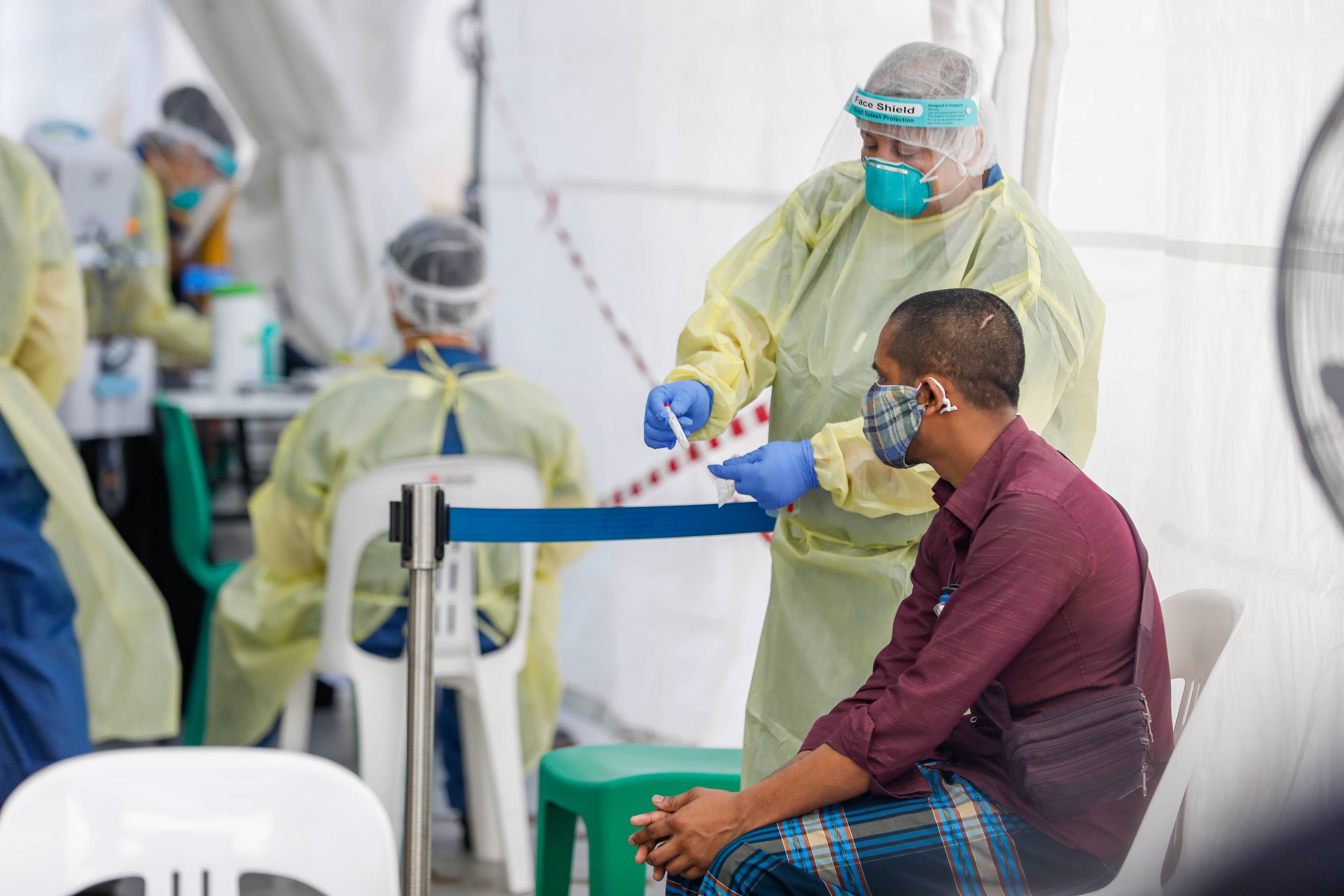
Onsite medical facilities for workers at foreign worker dormitory Avery Lodge. (Photo: Singapore Ministry of Manpower)
The cases in the new clusters started to grow. As of Tuesday, new clusters have been recorded at 21 dormitories, with nearly 900 cases since Aug 22.
They include Avery Lodge Dormitory, which now has 136 COVID-19 cases, and Westlite Toh Guan dormitory, with 120 cases. They were previously declared clear of COVID-19 on Aug 10 and Aug 14 respectively.
Some of the new clusters have closed, including S11 Dormitory, Cochrane Lodge 1, and Changi Lodge 2.
On Oct 1, MOM said it moved 342 migrant workers in a dormitory block in Space @ Tuas to a government quarantine facility to serve a 14-day quarantine, following the detection of a new case at the dorm on Sep 28.
“Preliminary assessment had indicated that the physical segregation measures to prevent workers across two different blocks within the dormitory from intermixing could have been breached,” said MOM.
Safe living measures at affected block were not strictly enforced, and the 342 workers – who work for 27 employers – were deemed at risk, said the manpower ministry.
The number of new cases at dormitories had continued to fall, with single-digit increases daily for October so far.
On Tuesday, the number of cases fell to zero for the first time in more than six months.
BOOKMARK THIS: Our comprehensive coverage of the coronavirus outbreak and its developments
Download our app or subscribe to our Telegram channel for the latest updates on the coronavirus outbreak: https://cna.asia/telegram
